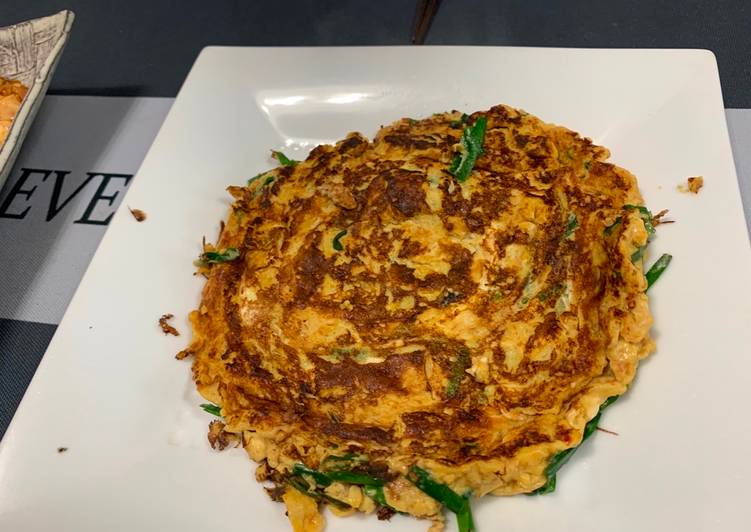Chinese chives omelet. Chives Omelet - A simple recipe that makes good use of the leftover ingredient, plus it's so fast to A good way to use up Chinese chives or garlic chives is to make chives omelet—a simple recipe that. The chives need no sautéing before adding to the beaten egg. Simply wash, chop , dump them into While being fried, the chopped chives will release an aroma to the eggs, making the omelet pungent.
 Flip omelet over and allow it to cook and brown for another.
Fuel up for the day with eggs for breakfast.
When you want a change, try the other omelet ideas at the end of the recipe. —Naomi Giddis, Two Buttes, Colorado.
You can cook Chinese chives omelet using 4 ingredients and 4 steps. Here is how you achieve it.
Flip omelet over and allow it to cook and brown for another.
Fuel up for the day with eggs for breakfast.
When you want a change, try the other omelet ideas at the end of the recipe. —Naomi Giddis, Two Buttes, Colorado.
You can cook Chinese chives omelet using 4 ingredients and 4 steps. Here is how you achieve it.
Ingredients of Chinese chives omelet
- It's 1/2 pack of Chinese chives.
- You need 3 pieces of Eggs.
- You need 1.5 tbsp of Soy Sauve.
- Prepare 4 tbsp of Milk.
Chinese chives are read as Jiu Cai (韭菜) in Chinese. There are both lovers and haters to Chinese chives. It is widely used in Chinese kitchen as a dumpling filling aroma ingredients. Chives Omelet - A simple recipe that makes good use of the leftover ingredient, plus it's so fast to prepare.
Chinese chives omelet step by step
- Cut the Chinese chives into 3 cm length..
- Beat the eggs in a bowl. Add the soy sauce and milk, then mix it well..
- Heat 1 tsp of oil in a pan, and stir fry the chinese chives quickly..
- Add beaten eggs, stir it easily to draw a circle slowly into from the outside. When one side become brown, turn it over and bake the other side..
Chinese Chives Omelette is a popular egg dish in Chinese and Malaysian cuisine. Get this quick and easy recipe with simple ingredients! Egg Foo Yung is a Chinese egg omelet. The name is Cantonese and means "hibiscus egg." What makes it distinct from the French omelet is that Egg Foo Yung is often served with a brown sauce. The Chinese chive pancake, known in Chinese as jiu cai he zi, originated from northeast China.